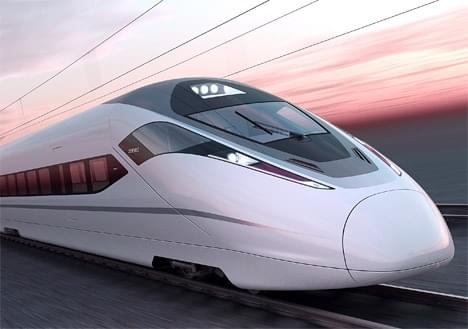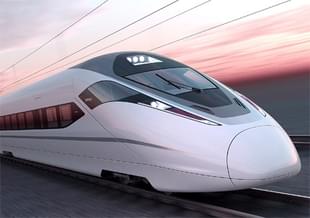Commentary
High speed folly in high speed folly
Avinash Tripathi
Apr 16, 2014, 10:23 PM | Updated Apr 29, 2016, 12:51 PM IST
Save & read from anywhere!
Bookmark stories for easy access on any device or the Swarajya app.



BJP’s much-awaited manifesto was released on 7th of April, the day first ballot was cast for the general election 2014. Most of the observers, even those not particularly enthused by the prospect of a NDA government headed by Narendra Modi, agreed that it contains a futuristic and governance-oriented agenda.
One of it’s earlier critique has been published by T.N. Ninan. Basically Mr. Ninan examines a key promise of manifesto—a network of high-speed railway terminals (i.e. Diamond quadrilateral)– and finds it financially infeasible. Thrust of his piece is that Diamond quadrilateral is a vanity project and incremental cost associated with this project can not be justified in terms of future benefits.
One key sentence of his piece however caught my attention. Mr. Ninan writes:
“The Mumbai – Ahmedabad corridor of about 500 kilometres (usually mentioned as the first likely high-speed project, out of a possible seven spread across the country) was estimated two years ago to cost Rs 60,000 crore; that figure is close to Indian Railways’ annual revenue from passenger fares!”
This comparison presumably proves that proposed Mumbai/Ahmedabad high speed project and other projects that will constitute Diamond Quadrilateral are hopelessly costly. This is a good argument except it is like comparing apples and oranges. Annual revenues are, well, annual revenues! They pertain to a specific financial year. By contrast, a high-speed railway project is an asset—it’s benefits will be spread over a longer time horizon. Comparison of annual revenue with project cost hardly proves anything.
To make things more concrete assume that Mumbai/Ahmedabad project is totally financed by debt, operational life of this line is thirty years (a very conservative assumption, many railway tracks in India older than that!) and rate of interest is around ten percent. Back-of-the-envelope calculations suggest that a loan of 60K crore can be redeemed by an annual payment to the tune of 6.7K crore (inclusive of both principal and interest component).
This project should be deemed to be viable if annual profit (net of all expenses) and other indirect benefits such as job creation etc exceeds cost of financing it. While the sum of 7K crore is indeed large, it is certainly not large enough to ‘bankrupt’ Railways as Mr. Ninan argues.
PS:
“Truth emerges more readily from error than from confusion” said Francis Bacon. Emergence of truth is all the more impeded when writers having their axe to grind deliberately try to create confusion. Basic rules of project evaluation are well known. Associated with a project is a sequence of incoming cash flow and project cost. In assessing project’s feasibility one either
1) capitalizes cash inflows using appropriate discount factors and compares capitalized values of inflows and project cost or 2) amortizes the project cost using appropriate interest rate and compares annual inflows/outflows. In his article, Mr. Ninan, perhaps deliberately , mixes both approaches—and compares project cost to annual revenue to make DQ seem less attractive than it is. Irrespective of whether DQ is a good idea, such rhetorical and misleading use of data points should be pointed out and that is what this post does.
In comments section, some have noted that this piece does not defend DQ as vigorously as it should. Perhaps I failed to communicate my intent properly, but the objective of this post, as elaborated in the last paragraph, was different. Cost/Benefit analysis of DQ is a worthy but sufficiently complex topic to divert attention from the point being made and deserves to be treated separately.
Avinash Tripathi is an economic researcher keenly interested in theory and institutional evolution of Indian economy





